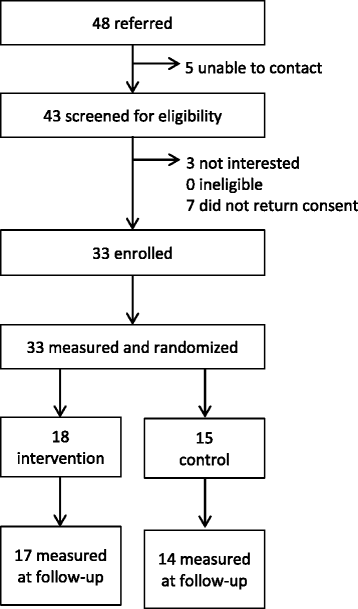Translating a child care based intervention for online delivery: development and randomized pilot study of Go NAPSACC
- PMID: 29162057
- PMCID: PMC5698966
- DOI: 10.1186/s12889-017-4898-z
Translating a child care based intervention for online delivery: development and randomized pilot study of Go NAPSACC
Abstract
Background: As part of childhood obesity prevention initiatives, Early Care and Education (ECE) programs are being asked to implement evidence-based strategies that promote healthier eating and physical activity habits in children. Translation of evidence-based interventions into real world ECE settings often encounter barriers, including time constraints, lack of easy-to-use tools, and inflexible intervention content. This study describes translation of an evidence-based program (NAPSACC) into an online format (Go NAPSACC) and a randomized pilot study evaluating its impact on centers' nutrition environments.
Methods: Go NAPSACC retained core elements and implementation strategies from the original program, but translated tools into an online, self-directed format using extensive input from the ECE community. For the pilot, local technical assistance (TA) agencies facilitated recruitment of 33 centers, which were randomized to immediate (intervention, n = 18) or delayed (control, n = 15) access groups. Center directors were oriented on Go NAPSACC tools by their local TA providers (after being trained by researchers), after which they implemented Go NAPSACC independently with minimal TA support. The Environment and Policy Assessment and Observation instrument (self-report), collected prior to and following the 4-month intervention period, was used to assess impact on centers' nutrition environments. Process data were also collected from a sample of directors and all TA providers to evaluate program usability and implementation.
Results: Demographic characteristics of intervention and control centers were similar. Two centers did not complete follow-up measures, leaving 17 intervention and 14 control centers in the analytic sample. Between baseline and follow-up, intervention centers improved overall nutrition scores (Cohen's d effect size = 0.73, p = 0.15), as well as scores for foods (effect size = 0.74, p = 0.16), beverages (effect size = 0.54, p = 0.06), and menus (effect size = 0.73, p = 0.08), but changes were not statistically significant.
Conclusions: Core elements of NAPSACC were effectively translated into online tools and successfully implemented by center directors. Results suggest that the online program may have retained its ability to drive change in centers' nutrition environments using a streamlined, self-directed, and flexible implementation approach. Results need to be confirmed in a larger more definitive trial.
Trial registration: NCT02889198 (retrospectively registered).
Keywords: Children; Implementation; Nutrition environment; Web-based.
Conflict of interest statement
Ethics approval and consent to participate
Protocols for this study were review by the Institutional Review Board at the University of North Carolina at Chapel Hill. Review deemed this study to be exempt. Consent was obtained from center directors. Since teachers were not providing any personal data, they received a fact sheet about the study, but were not asked to sign consent.
Consent for publication
Not applicable.
Competing interests
The authors declare that they have no competing interests.
Publisher’s Note
Springer Nature remains neutral with regard to jurisdictional claims in published maps and institutional affiliations.
Figures
References
-
- Mamedova S, Redford J. Early childhood program participation, from the National Household Education Surveys Program of 2012. In. Washington, DC: National Center for Education Statistics, Institute of Education Sciences, U.S. Department of Education; 2015.
-
- World Health Organization. Report of the commission on ending childhood obesity. Geneva: WHO Press, World Health Organization; 2016.
Publication types
MeSH terms
Associated data
Grants and funding
LinkOut - more resources
Full Text Sources
Other Literature Sources
Medical
Research Materials


